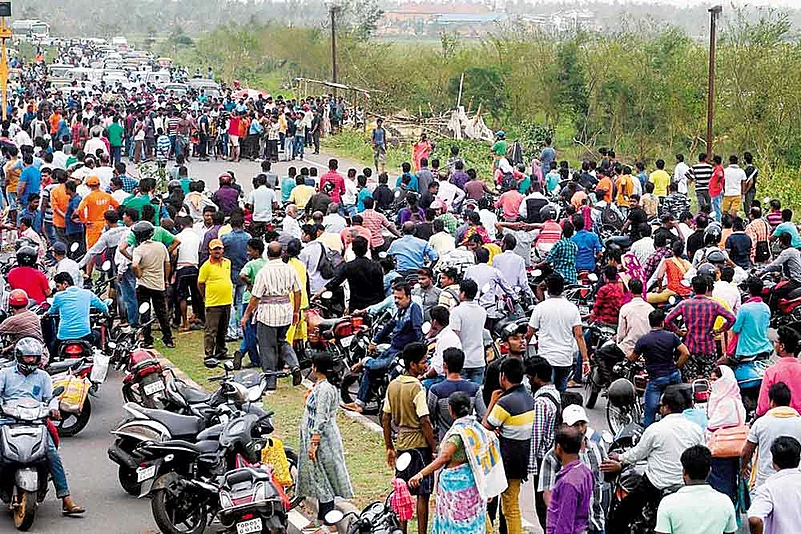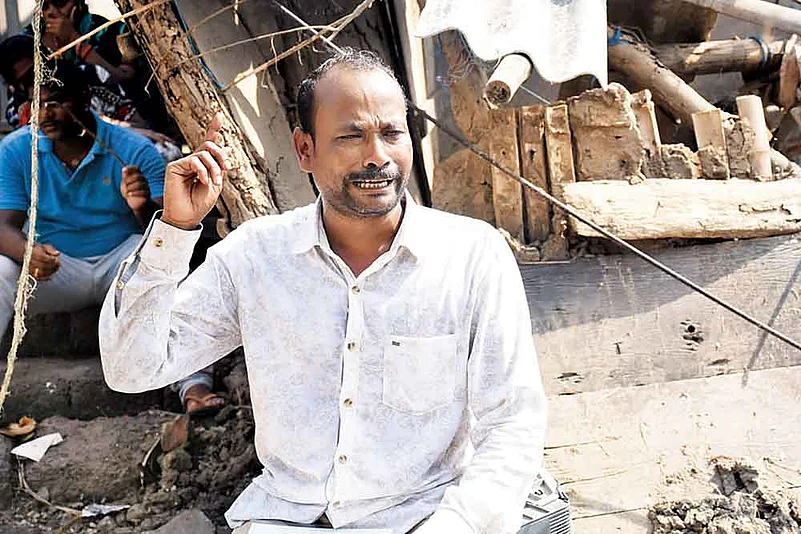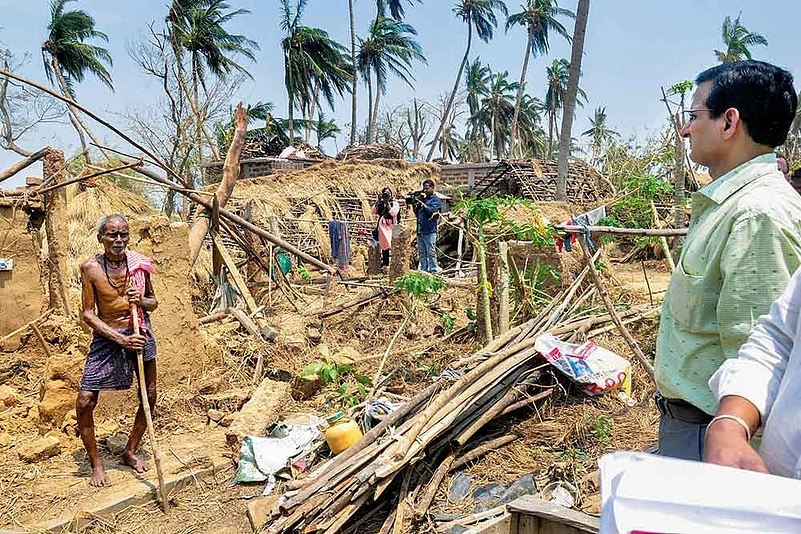Odisha takes pride in the disaster management measures it has put in place since the 1999 Super Cyclone and has earned praise from all quarters, including the United Nations. Even during Cyclone Fani, its latest disaster, the state government received a pat on the back from everyone—PM Narendra Modi to the New York Times—for the massive evacuation exercise that saw an estimated 14 lakh people moved from the coast to safer locations in the hours leading up to the cyclone.
But all preparatory measures taken over the years came a cropper as Fani pounded the Puri coast on the morning of May 3 with a wind speed of 200 kmph. As the storm left behind a trail of destruction on its way to Bangladesh, it demolished the cyclone-eve claim of ‘zero casualty’ made by the state government. By May 13, the cyclone toll had mounted to 64, including 39 in Puri district alone, and might rise further. Much the same had happened during Cyclone Titli last October—it too began with a ‘zero casualty’ claim and ended up with 77 deaths!
A reason for the high casualty figure this time was that the Category 4 cyclone kept changing its course and speed as it hurtled along the Bay of Bengal towards the coast, gathering speed every hour. This made tracking its course difficult and caught the authorities off-guard. “It certainly behaved abnormally in a sense, making tracking its course difficult,” says Sarat Sahu, director at the Centre for Environment and Climate of the Shiksha O’ Anusandhan University and former long-time director of the India Meteorological Department’s (IMD) Bhubaneswar centre.

Protesters block a highway in Puri.
“Cyclonic storms originating in the south of Sri Lanka on the equator in summer rarely intensify into major storms. When they do, they generally hit the Tamil Nadu-Andhra Pradesh coast and rarely head towards Odisha.”
Sheshadeba Nayak, who lost his nine-year-old deaf and dumb daughter in the cyclone, recounts the fateful day: “Since the evening of May 2, there was no power, phones weren’t working. And before the the lights (and TV) went off, we were told landfall would be at 5 pm. We were having an early meal at about 7.30 am, planning to rush to the cyclone shelter 2.5 km away right after, but the wind started blowing and one of the asbestos sheets of our roof hit my daughter on the head. For three days, I could not take her to the hospital as all roads were closed. When I finally managed to take her to the district hospital in Puri on May 6, the doctor said she was dead,” says Sheshadeba, sobbing.
Until the previous evening, the forecast indeed was that Fani would hit land at 5 pm. But the arrival time kept getting advanced every hour, and in the morning news came that it would have a landfall as early as 8 am! In sharp contrast, the IMD was spot on with its forecast of the exact time and location of the almost equally intense Cyclone Phailin’s landfall, which had hit the Gopalpur coast on October 12, 2013. That forecast was at least 12 hours before the landfall. Sheshadeba and many like him could have saved their near and dear ones had they known the time of Fani’s landfall well in advance.

Sheshadeba lost his daughter.
The government’s claim before the cyclone that it was ‘fully prepared’ to meet the challenge was also blown away in it. Eleven days later, several areas in capital city Bhubaneswar are still without power and water, while telecom and internet remain dodgy. The state government, which had assured people that power would be restored to ‘all’ areas in the city by May 12, had to eat its words as people in several localities were out on the streets demanding power as late as May 14.
“Where power has been officially restored, it’s more ‘off’ than ‘on’,” says Biswambhar Acharya of the city’s Sahid Nagar area. Grossly understaffed for the mammoth restoration, the state energy department requisitioned the services of power workers and engineers from Telangana and West Bengal four days after the cyclone. In the absence of proper coordination and logistics support from local authorities, the progress has been tardy.
Information and public relations secretary Sanjay Singh, who has been daily briefing the media on the restoration work, pleaded for ‘patience’ on May 13. “There has been massive damage to electrical and telecom infrastructure, and full restoration would take time. There are three stages to 100 per cent restoration of power—restoration of infrastructure, stabilisation and rectification. While restoration has been completed, stabilisation and rectification have been taken up on a war footing,” he said. Areas like Kalinga Nagar, SBI Colony, Baranga, Gothapatna, Nuagaon, Chandaka Industrial Estate and Samantrapur in the capital are yet to get power back, he admitted.
If this is the situation in the capital, one can imagine how things would be like in the interiors. The government said restoration of power in worst-hit Puri would begin from May 15, by when power was to be back in Puri’s Grand Road. But the actual progress leaves no room for doubt that this deadline, like the one for Bhubaneswar, too would be missed. Everywhere this reporter went in Puri district, fallen trees, mangled electric and telephone poles lay strewn by the side of roads, often blocking them, even a week after the cyclone. “A 220 KV transmission tower and two 132 KV towers supplying power to Puri have been fully damaged,” said Sanjay Singh. “Odisha Power Transmission Corporation Ltd has been asked to get at least one of them up and ready by May 15.” Many areas in Khordha, Cuttack and Jagatsinghpur districts are also bracing for a long spell without power in the scorching May heat.
Restoration of power and telecom services is not the only area where the government has been found wanting. Everywhere one went, people complained bitterly that the immediate relief announced by the government is yet to reach them. “All that we have received so far in terms of relief is some rice. There is no sign of the cooked food or monetary assistance that the government had announced,” rues Sanatan Behera, a villager in Satyabadi area of Puri district.
A local civic body member in Brahmagiri, who requested anonymity, says polythene sheets sent by the government for distribution among those who lost their roofs are yet to be distributed. “More than 500 people in the panchayat lost their roofs, but they have sent just 200 sheets. If we start the distribution, there could be a riot-like situation,” he says. Pilferage of relief materials at many places by organised gangs suggests that such fears are not entirely misplaced.
Agriculture, fisheries, educational INStitutions, healthcare centres, tourism industry and the environment have all taken a big hit from Fani. Over two million trees have been uprooted, while the Chilika lake’s salinity is believed to have increased due to saltwater ingress during the cyclone. Environmentalists say this could have serious repercussion for the fragile ecosystem.
It was said the Super Cyclone of 1999 had pushed Odisha back by 20 years. It is hard to say at this stage how much the state has been pushed back by Cyclone Fani. But there is little doubt that rebuilding the state would be a long haul.
By Sandeep Sahu in Bhubaneswar
















